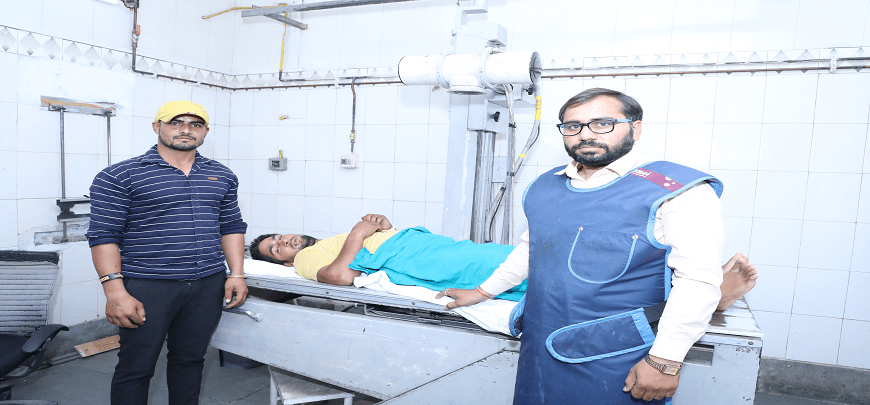Working Time
- Mon-Thu 08:00 - 20:00
Friday 07:00 - 22:00
Saturday 08:00 - 18:00
Contact Info
-
Phone: 012-752-56660
. - info@gnhpalwal.com
Ask the Experts
Radiology Department

Radiology Department
- Guru Nanak Hospital strives to make your visit to imaging department a positive experience by providing excellent patient care. Our caring staff is friendly and willing to lend a helping hand. Our safe and efficient imaging services are fully coordinated with your medical team and provide quick results. It's a simple concept that produces amazing results for all.
An X-ray is a quick, painless test that produces images of the structures inside your body — particularly your bones.X-ray beams can pass through your body, but they are absorbed in different amounts depending on the density of the material they pass through. Dense materials, such as bone and metal, show up as white on X-rays. The air in your lungs shows up as black. Fat and muscle appear as varying shades of grey.
Diagnostic ultrasound is an imaging method that uses high-frequency sound waves to produce relatively precise images of structures within your body. The images produced during an ultrasound examination often provide valuable information for diagnosing and treating a variety of diseases and conditions. Guru Nanak Hospital offers a variety of ultrasound services in the areas of abdominal imaging, gynecologic, vascular and small-parts imaging.
A mammogram is an X-ray image of your breast used to detect breast cancer. Guru Nanak Hospital provides Conventional Mammography to help with the early detection of breast cancer. The Radiologist can view and manipulate the images on high-resolution computer monitors that enhance visualization of the structures within the breast tissues. They also can adjust brightness and contrast, and zoom in on specific areas to help detect small calcifications, masses and other changes that may be signs of early cancer.
Digital radiography is a form of X-ray imaging, where digital X-ray sensors are used instead of traditional photographic film. Advantages include time efficiency through bypassing chemical processing and the ability to digitally transfer and enhance images. Also, less radiation can be used to produce an image of similar contrast to conventional radiography. Instead of X-ray film, digital radiography uses a digital image capture device. This gives advantages of immediate image preview and availability; elimination of costly film processing steps; a wider dynamic range, which makes it more forgiving for over- and under-exposure; as well as the ability to apply special image processing techniques that enhance the overall display quality of the image.
Treatments & Procedure
Guru Nanak Hospital provide a complete range of imaging services for the clinic and hospital patients including:


